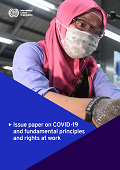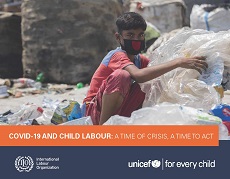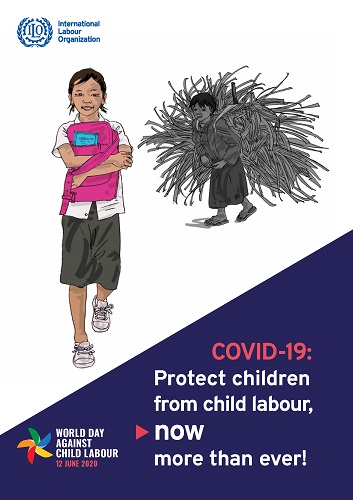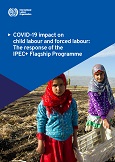Publications on child labour
2020
-

Issue paper on COVID-19 and fundamental principles and rights at work
07 October 2020
For the millions of workers already in vulnerable situations, the COVID-19 crisis can have devastating consequences: their fundamental rights at work are under threat, pushing them and their families towards greater insecurity. Safeguarding and extending fundamental principles and rights at work will therefore be critical to the success of both immediate and longer-term responses to the crisis in the world of work.
-

COVID-19 and child labour: A time of crisis, a time to act
12 June 2020
With the COVID-19 pandemic, we face the risk of reverting years of progress. We may see an increase in child labour for the first time in 20 years. This is why ILO and UNICEF decided to look into the ways the crisis is affecting child labour.
-
The COVID-19 pandemic could increase child labour in Latin America and the Caribbean
11 June 2020
ECLAC and the ILO presented a new document in wich they alert that the pandemic will exacerbate existing vulnerabilities, including an increased risk of child marriage, child labour, and teenage pregnancy.
-
World Day Against Child Labour (WDACL) 2020: Activities around the world
11 June 2020
-

COVID-19: Protect children from child labour, now more than ever!
26 May 2020
COVID-19 presents unprecedented risks to the rights and safety and development of children. World Day Against Child Labour 2020 calls upon countries and organizations to focus on the needs of the most vulnerable during crisis management and recovery.
-
World Day Against Child Labour 2020 - Illustrations
20 May 2020
-
Support the World Day Against Child Labour on social media!
20 May 2020
-
World Day Against Child Labour 2020 Illustrations
20 May 2020
-

COVID-19 impact on child labour and forced labour: The response of the IPEC+ Flagship Programme
20 May 2020
What is the real impact of COVID-19 on child labour and forced labour? How the ILO has repurposed its resources and operations to mitigate the devastating effects of the pandemic? How the international community can contribute to this effort?
-

Measurement, awareness-raising and policy engagement project: MAP16
04 May 2020